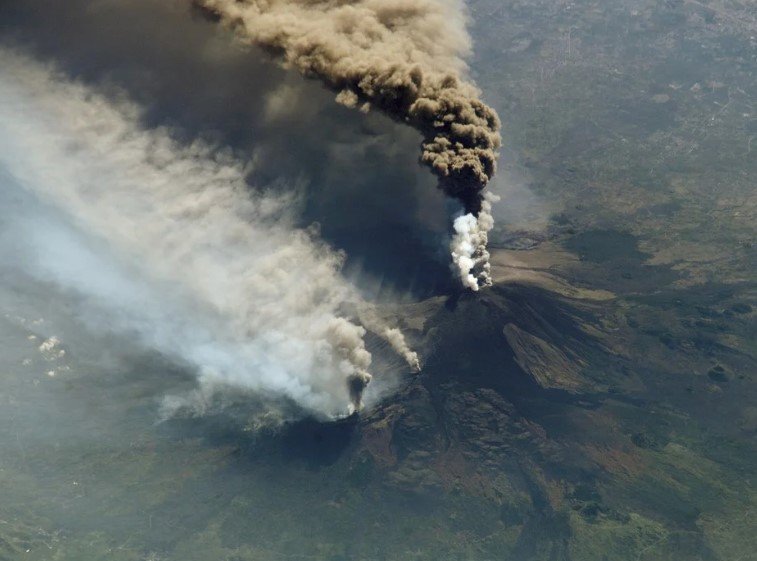Mount Etna, Europe’s most massive active volcano, erupted violently on Monday, June 2, sending thick ash plumes soaring into the sky and sparking a wave of alarm across Sicily. Despite the dramatic display, officials say the surrounding population remains safe and disruption limited.
The early morning eruption began with intense strombolian activity — basically, a series of powerful bursts that threw molten rock and ash high above the summit. Ground tremors rattled homes nearby, adding a real edge of tension to the situation.
Volcanic Fury in Motion: What Happened at Mount Etna?
Videos flooding social media showed tourists scrambling, as glowing lava started its slow crawl down the volcano’s flanks and towering clouds of ash billowed up some 6,400 meters (roughly 4 miles) into the air. The Volcanic Ash Advisory Center in Toulouse wasn’t taking chances and issued a “code red” warning for ash dispersal over the region.
The National Institute of Geophysics and Volcanology (INGV) quickly assessed the event. They reported that the eruption kicked off after part of the volcano’s southeast crater collapsed, releasing magma that then surged out as lava flows. This was the 14th eruptive phase at Etna over the past several months — a sign the giant mountain is far from done.
Despite the fiery drama, authorities stressed the eruption posed no immediate danger to local residents. Sicily’s President Renato Schifani stepped in with reassuring words, emphasizing that the lava remained contained within natural boundaries, sparing nearby towns from harm.

Safety Measures and Flight Alerts in Response to Eruption
While the Catania airport raised its alert level, no flights were canceled or delayed, a small relief for travelers and airlines alike. Still, the summit area of Etna was promptly closed to tourists to avoid any unnecessary risk.
The eruption highlights a tricky balance for Sicily — a place where natural beauty and volcanic activity are tightly woven together. People flock here to see the volcano’s stunning power but must always be ready for nature’s unpredictability.
Volcanoes as a Reminder of Nature’s Might and Human Resilience
Mount Etna’s recent outburst is a vivid reminder of the power bubbling beneath the earth’s surface. It’s a spectacle that both awes and unsettles — lava’s fiery glow contrasting with the ash cloud’s ominous shadow.
Looking back, Etna has a long history of eruptions shaping the landscape and culture of Sicily. Scientists continue to monitor it closely, knowing that while these events may cause local alarm, they also offer valuable insights into volcanic behavior.
For now, Sicily breathes a little easier, but the mountain’s mood remains watchful. The eruption serves as a stark lesson in respect for the natural forces that define much of the Mediterranean’s character.
| Key Facts About Mount Etna’s June 2025 Eruption |
|---|
| Date of eruption: June 2, 2025 |
| Height of ash plume: ~6,400 meters (4 miles) |
| Eruptive phase: 14th in recent months |
| Impact on flights: No disruptions |
| Safety zones: Summit closed, lava contained |
The world keeps an eye on Mount Etna — a reminder that some forces, no matter how ancient or familiar, can still take our breath away.
